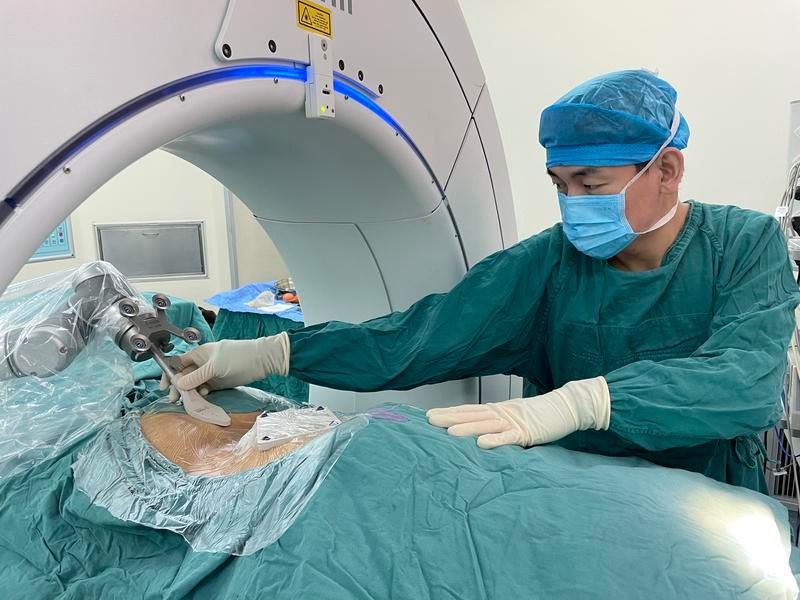Sacral tumor is a rare tumor, and its surgical treatment has always been one of the difficult problems in the medical field. Recently, Master Dai, a 57-year-old from Lantian County, came to Xi’an Red Cross Hospital for treatment because of a sacral tumor. The doctor performed a precise “puncture” biopsy with the assistance of a robot, and the tumor was successfully removed within 1 hour after the pathological diagnosis was confirmed.
In the ward of the degeneration and tumor ward of the Spine Hospital of the Red Cross Hospital, the reporter saw Master Dai, who was about to be discharged four days after the operation. His mental state was very good, and he quickly sat up when the reporter came in. Master Dai told reporters that he is usually in good health, and he always bears any illnesses. In the past five years, I sometimes feel back pain and numbness in my legs, and I can’t feel my right toes. Sometimes I can’t feel the slippers I wear. Busy with the farm work at home, the big-hearted Master Dai has not paid attention to it. Not long ago, his wife felt unwell and went to the hospital for an examination. The local doctor said that the operation was difficult and suggested transferring to another hospital. On behalf of the master, he came to Xi’an Red Cross Hospital.
After coming to the hospital for examination, the doctor found that a lump the size of a goose egg had grown on Master Dai’s sacrum. Jiang Kuo, the chief physician of the degeneration and tumor ward of the Spine Hospital, said that the sacrum and coccyx are at the end of the entire spine and are the “little tail” of the body. Master Dai’s tumor is relatively large. Tumors in this area often protrude into the pelvis and adhere to the peripheral nerve plexus and large blood vessels. The operation can easily damage the peripheral blood vessels and cause uncontrollable hemorrhage, or damage the pelvic nerve plexus and cause paralysis and incontinence. .
It is estimated that the operation will be much bleeding and difficult. In order to minimize the risk of patients, Hao Dingjun, chief expert of the Red Cross Hospital, and Shan Lequn, the director of the ward, decided to use the The robot first performed a tissue biopsy on Mr. Dai. Traditional surgical biopsies require a lot of effort by experienced doctors to complete the procedure, which often leads to high operation time, increased risk of complications, and even catastrophic consequences if small errors occur. In this robot-assisted biopsy, precise puncture through robot navigation improves accuracy, reduces radiation, and reduces blood loss. “The entire biopsy took only half an hour, which greatly shortened the operation time and reduced the incidence of complications.” Jiang Kuo said that Mr. Dai’s pathological results came out soon, and the tumor was benign. The team immediately arranged for Mr. Dai After tumor resection surgery, the tumor was completely removed within an hour.


The doctor is precise under the robot Perform a “puncture” biopsy for the patient
Due to the successful operation and less bleeding, Master Dai recovered quickly, and he was able to get out of bed the next day after the operation. When the reporter saw him, he was ready to be hospitalized. “Now the waist doesn’t hurt, the legs don’t numb, and the toes can move freely. It’s completely healed.” Looking at the doctor, Master Dai happily showed the effect of his recovery.
With the increasingly sophisticated medical technology and the development of medical equipment, more and more patients feel the charm of digital intelligent technology + rapid recovery, and rare tumors are no longer scary. However, the doctors of the Red Cross Hospital still reminded that sacral tumors are relatively rare and should not be taken lightly. If there is persistent pain in the sacrococcygeal region, you should go to the orthopaedic specialist outpatient clinic in time to rule out tumor lesions.
Xian Newspaper All Media Reporter Ma Xiang